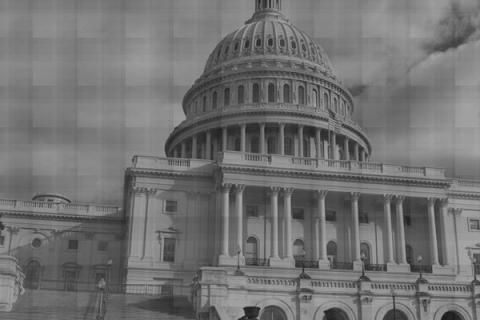 AHMAD FAIZAL YAHYA / Shutterstock.com
AHMAD FAIZAL YAHYA / Shutterstock.com
The 2012 presidential candidates spent a combined $1.8 billion on advertising, and roughly $200 million of that went to online channels, notes Ad Age. The Huffington Post, meanwhile, estimates the larger political advertising market for local, state and federal campaigns was as large as $9.8 billion in 2012.
In the past, politicians had to advertise on TV if they wanted to win an election. But, DVRs have interrupted the effectiveness of advertising, as have increased use of mobile devices by consumers while they watch TV.
More and more viewers are shunning local and national news -- the politician's best friend -- for online news and social media. Cable news companies have taken a beating in viewer confidence, with just about one in five putting “great confidence” in television news.
The change has left networks scrambling. How will ad dollars and subscribers from services like Direct TV be divvied between the main screen and the second screen (mobile phones and tablets) in the future? How will candidates reach those most likely to help them get elected?
The Rise of the Second Screen
Smartphones and tablets have brought a new era of “curl up computing” to homes, simultaneously competing with and enhancing TV consumption, notes Launch. Social media sites such as Twitter and Facebook have become real-time comment boards for viewer opinion. Second screens can provide consumers with a direct link to view and purchase the products being advertised.
More than 80 percent of TV viewers are using their smartphones, tablets or computers while watching, Social News Daily reports. Continual access to consumers, and by extension voters, is now the norm. This connection enables not only an enriched viewing experience, but a connected consumer experience that shapes branding and local marketing.
One way politicians are utilizing second screens is by creating social media accounts on Facebook and Twitter to encourage voters to engage in political conversations. Rich social media-driven data gives politicians a direct insight into the needs and wants of voters, while directly participating in conversations with ballot casters.
Networks are joining in on the buzz. For example, CNN teamed up with Facebook in 2012 for a campaign called "America's Choice 2012," which included an app and surveys. Insights gleaned through the campaign were shared on the channel, integrating the second screen experience.
Other voter-focused apps bring politicians and voters even closer together. The Peel Smart Remote TV app, used in last year's debates, allowed viewers to share their opinions through the live broadcasts on mobile devices.
Politicians who are used to skewing the facts can no longer do so, thanks to mobile apps such as Politifact, which provides fact-checking of candidates, and just about every major news outlet streamed last year's debates on mobile devices, ensuring voters who don't even own TVs still had access to the action.
While apps such as these aren't direct forms of paid advertising by candidates, they still provide a myriad of opportunities for politicians to form even closer connections with voters.
Cutting the Cord?
The question of whether millennials will turn out to be cord cutters, getting rid of their pay TV services in favor of streaming options, is still playing out. This has led to a never-before-seen decline in pay TV.
Gigaom reports the industry lost a total of 80,000 subscribers from April 2012 to March 2013. This is the first time there have been subscriber losses over a 12-month-period in the history of the industry.
Experts blame the decline on limited disposable income among younger demographics. A competing theory is a generational shift, where younger viewers want TV on any device, not just cable or satellite services, reports Business Insider.
Internet-connected services offer never-before-possible real-time viewing data. This information will become increasingly useful and valuable in the transformation of election campaign advertising. The data shows a shift to mobile computing, but a continued reliance on traditional media.
Stretching campaign dollars, and converting them into results, is an ongoing challenge and a moving target. Already, the use of social media has shown its value economically and strategically in elections past.
Software integration is improving the experience of the second screen. Market saturation is pushing smartphones into more hands. The traditional experience of watching TV and its corresponding political ads is going to continue to morph into a seamlessly mobile experience dictated by the free time of the viewer.
Editorial note: This article was written by Curtis Walker
